Page Contents
Incredible landscapes, mind-blowing wildlife opportunities and warm, friendly locals. That should have read ‘spoiler alert’. This my friends, is the Guyana Rupununi Savannah.
There aren’t many words that can express how much I enjoyed my time in the Guyana Rupununi Savannah. It’s a real treat to go somewhere very few people get to travel. I mean, Machu Picchu gets more visitors in one day than Guyana does in a year.
It was more the fact that this country didn’t disappoint, not one bit. It was one of the best countries I’ve travelled to in a long long time. And that’s saying something.
“Guyana is an authentic, rugged, off-the-beaten track destination with less than 3000 visitors a year.”
I’ll start with a few tips for getting there and why you should visit, before moving on to the things to do and reasons to visit Guyana. During this article I want to focus on the people. I tried hard to capture them in every photo I took, alongside the YouTube video linked below.
I hope I did Guyana justice, as it really was the people who made this trip so special. Don’t forget to check out the video of the entire trip, at the bottom of this article.
How to Get to the Guyana Rupununi Savannah?
Guyana is served by Cheddi Jagan International Airport but there are no direct flights from London.
You can fly via the London Gatwick route which usually has a stopover in Trinidad and Tobago (at Port of Spain Airport) via the Caribbean Airlines.
However, the easiest and the most popular way to get to Guyana from the UK is flying to the US. From London Heathrow to New York, JFK Airport, (or Miami), and then take a connecting flight to Georgetown.
Once in Georgetown it’s a short flight from Georgetown to Letham. We flew with Trans Guyana Airways. The plane was small, but the flight was great.
Why Visit the Rupunini Savannah in Guyana?
Just when you think you’ve seen it all as far as wild and remote locations go, the Rupununi Savannah will surprise you.
The Rupununi Savannah of Guyana is part of an expansive biodiversity-rich region popularly known as the Rupununi Savannah. It’s perched between the Rupununi River and the border with Venezuela and Brazil.
What makes this region unique is the diversity of habitats– from tropical grassland and wetlands to shrublands and savannahs. It really has it all.
For this reason, the Rupununi Savannah supports a remarkable diversity of species most of which in many cases are endangered or threatened. In the Rupununi alone, you’ll find over 25 different species that are endemic to Guyana.
Aside from the beautiful terrain, here are some of the things you can do and reasons to visit the Rupununi Savannah of Guyana.
Things to Do in the The Guyana Rupununi Savannah
Let’s jump into the main topic of this article, which are all the activities in Rupununi Guyana, and let me tell you, you’ll love your time here!
Rupununi River
A lot of your activities will be centred around the Rupununi River, the lifeblood of the Rupununi Savannah.
River kayaking and canoeing are among the best activities in Guyana as they give you a unique perspective on the country’s wildlife and landscape.
A voyage along the Rupununi River in a charming traditional dugout will offer you amazing opportunities to spot diverse birdlife, wild Giant River Otters, and even Black Caiman.
We had a chance to canoe with Wichabai Lodge, spotting wildlife and enjoying a little El Dorado rum, before one of the most spectacular sunsets on the trip. It was one of many.
In Karanambu, daily life revolves around the Rupununi, as will your experience. We spent each day on the river, from searching for Giant River Otters to seeing the Giant Water Lily.
I’ll be explaining more about the Rupununi River more during this article.
The People of the Rupununi Savannah, Guyana
There was a distinct change from the Caribbean influence in Georgetown, to the South American feel to the Rupununi Savannah.
Both had their own charm and characteristics, but both had one thing in common. They were welcoming and proud. Proud to show you their way of life and proud to be called Guyanese.
Naturally there is culture and heritage from other nations. Amerindians make up 10% of the population, whilst nations in South America and neighbouring Brazil, and a strong link with Trinidad. This forms the identity of Guyana.
Each day we met someone new. A vaquero demonstrating the traditions passed down through generations, or a lodge owner with their favourite spot from their childhood.
Everything learned from the locals was taught to us with passion and meaning. Like it came from the heart, they truly enjoyed sharing their practices with us, and welcoming us into their family.
This is the Best Tour in Guyana
Want to make the most of your time in Guyana? Check out this 8-Day Trip Around Guyana From Georgetown!
It includes transportation, all meals, and a local guide!
The Ranches and Lodges
Ranching is a huge part of daily life in Guyana, especially in the Rupununi region. In the ranches you’ll get a chance to detach from the world and indulge in a cowboy lifestyle for a few days.
Some of the best ranches to visit include.
Wichabai Ranch
This family-owned ranch is located deep within the south savannah of the Rupununi region and it’s one of the best places where you can live out your inner cowboy or cowgirl.
Situated a few hours’ drive from Lethem, Wichabai Ranch is in a secluded and unspoiled landscape. Time to relax with nothing but the sound of nature.
Some of the activities you can do here include trekking, horse riding, swimming, rowing, and fishing, not to mention endless opportunities for birdwatching.
The highlight was learning from the rodeo champion Chado, who taught us to lasso and crack the whip. Before taking us on a sunrise horse-ride up the mountain.
Erin and Justine with their extensive knowledge of the area plus a hankering for storytelling make the perfect host and they’ll go out of their way to make your stay is a memorable one. Maya might also join you with her eye for photography and love of nature.
They will also serve you a delicious, fresh breakfast from the main lodge, with stunning views across the Savannah. If you’re lucky (as we were) you might spot he Jabiru, the tallest bird in South America.
It was from Wichabai Ranch we visited Barawatau Mountain, more below.
Dadanawa Ranch
Not far from Wichabai is the Dadanawa Ranch. Established in the 19th century, Dadanawa has a long-standing history as one of the largest ranches in the world.
In addition to being a great place where you can have a glimpse and insight into a working ranch, Dadanawa is also an incredible base for wildlife too.
We spent an afternoon watching the local vaqueros round the cattle up into the Corral (cattle hold), before lassoing and riding them. What an experience. I was tempted to have a go, but I value my limbs too much!
Waikin Ranch
Waikin is located close to Lethem town and it’s among the best places to visit in Guyana, if you want to experience authentic agri-tourism, in the country.
Every meal you’ll have on this ranch is either grown or reared here which means each plate is as fresh as it gets.
This ranch offers a balance between modern accommodation and scenery. They have a pool for a refreshing dip, and their own nighttime nature walk to spot Capybaras, Caiman and Anacondas.
Here we had another chance to go horse-riding (this time before breakfast) and have one of the best wildlife encounters of my life. More on that below (the Giant Anteaters).
We learned about a few other unique facts at Waikin. They have amazing archaeological finds, artifacts that predate the Inca and Mayan empires! Not to mention a cooking lesson with the resident chef, learning to make fafora.
The final experience with Waikin Ranch I’ll never forget was visiting Termite City. Thousands of termite mounds (yes thousands) some standing over 10 feet tall.
Barawatau and WiiWiitau Mountain
If you’re staying at either Dadanawa or Wichabai Ranch, you can have a day trip to these two mountains. They can only be accessed by car.
They’re not far apart and you can marvel at Petroglyphs and the rock carvings at Barawatau then enjoy astounding views of the landscape from WiiWiitau.
We spent more time at Barawatau, weaving our way there between giant black rocky outcrops and intimidating mountains. They are cooled remnants of ancient magma chambers. The type of landscape that could only be truly appreciated from above.
At Barawatau, there are undeciphered rock carvings and Petroglyphs, dated back to over 6000 years ago. Many people have their theories to what they mean, but Leroy our guide suggests they are the local fishing spots carved into the mountain.
Visit an indigenous village
Visiting indigenous villages is a fantastic way of gaining insight into local culture and customs. We spent the day at Katoonarib village, directly translated to ‘Bush Island’.
This small village of fewer than 700 residents is home to indigenous communities – Amerindians, from the tribes of Wapishana, Macusi, Arawak, and Utarad.
These tribes are the ancient custodians of the southern part of the country, so visiting them in their land is an integral part of the Guyana experience as you get to see how they live.
We were welcomed into the homes of Nicolas and Veera, who showed us how to make cassava bread. The process started with digging up the cassava, before being prepared in the kitchen.
It’s a timely and intricate process, following the same recipe that’s been passed down through generations. Finished off with a delicious local broth.
The Wildlife Spotting Opportunities
The incredible diversity and abundance of wild animals have given Guyana a reputation as one of the best destinations in South America for wildlife and birdlife spotting.
From giant anteaters and armadillos to capybaras and jaguars, seeing elusive animals in their uninterrupted natural habitat is always a thrilling experience.
In addition to the jaguars and giant anteaters, other elusive animals that you’re likely to encounter include Ocelots, Deer and Goliath bird-eating spiders.
Since a lot of ranches and farms are close to rivers, natural and manmade ponds as well as lakes, you’ll find innumerable species of birds that have made this place home year-round.
Some of the birds you’re likely to spot both on the Rupununi Savannah and along ponds or rivers are big birds such as Agami Heron, Jabiru Stork, and Great Egrets, and even the Cock on the Rock. Yes, you read that correctly. Don’t miss the photo under Kaieteur Falls, below.
Possibly one of my favourite wildlife encounters of my life, from Waikin Ranch, was spotting Giant Anteaters. A local vaquero had spotted a pup with its mother, an incredibly rare sighting even for a local.
We trekked across the marshes, keeping our distance and staying downwind of the Giant Anteaters. And sure enough we saw them, watching the pup climb on and off the mothers back. This pup was nearly big enough to venture out on its own.
What an incredible animal to see in its natural habitat.
This is the Best Hotel in Georgetown Guyana
Check out Guyana Marriott Hotel for the perfect stay!
They provide world-class service, stunning rooms, and incredible amenities.
Explore Karanambu
Perched on North Rupununi, on the banks of Rupununi River and spanning 125 square miles, Karanambu has been a working ranch and home to the famed Mc Turk family since 1927.
This place was initially established to protect the wetland terrain while providing visitors with a chance to explore the local wildlife and has hosted Mick Jagger and wildlife legend himself Sir David Attenborough.
In 1983 Karanambu lodge was established on the ranch to give visitors a base from which they can venture out to explore the area while still having a glimpse into the day-to-day life of running the ranch.
The lodge boasts 5 accommodations made of clay bricks, wood, and thatched roofs, giving the rooms a rustic feel that goes well with the surrounding wilderness.
With both the Savannah and Rupununi River within easy reach, there is a myriad of activities you can do here such as boating, taking walks to enjoy flora and fauna, wildlife spotting as well as fishing.
There were two stand-out things we saw at Karanambu. We set out each day by boat in search of the illusive Giant River Otter, which we spotted at a distance, but didn’t get a great photo. It was still such an experience seeing these animals in the wild.
The second unique experience to Karanambu was seeing the Giant Water Lily, Guyana’s national flower. It’s the largest known water lily in the world.
Kaieteur Falls
Bucket list territory, I couldn’t talk about Guyana without mentioning the Kaieteur Falls. This is a must do in Guyana and one of the most spectacular natural wonders I’ve ever seen.
Since it’s nestled within the lush Amazon jungle, chartering a flight and taking a day trip is the easiest way to get here. This is usually done from Georgetown, however it is possible to charter one from the Rupununi Savannah as we did.
Cascading 741 feet, Kaieteur Falls is the largest single-drop waterfall in the world and one of the best things to do from the Rupununi Savannah.
And the best bit, the small plane will circle passed Kaieteur Falls from the air before landing on the airstrip next to the falls. Absolutely spectacular.
Best Tours in Guyana
When in Guyana, you want to make the most of your time, and for that to happen, I recommend joining a tour with an experienced guide. Here are the best tours in Guyana you should consider:
8-Day Trip Around Guyana From Georgetown
If there’s one way to visit Guyana, it must definitely be this one. You’ll start the 8-day trip from Georgetown and make your way to Kaieteur Falls, easily some of the best spots in the country.
Apart from natural wonders, you’ll go deep into the heart of Guyana’s lush rainforest, where you’ll catch glimpses of rare endemic species such as the jaguars, giant anteaters, and capybaras.
You’ll also visit the Rupununi savanna, where you can observe the enchanting beauty of the Caroni and Essequibo rivers.
But it’s not all about nature – we’ll take you to the charming urban hub of Georgetown, where you’ll soak up the local culture and indulge in delicious cuisine.
The tour includes 6 breakfasts and lunches, as well as 3 dinners and transportation around Guyana, so you won’t have to worry about a thing!
5-Island and Town Hopping Tour
When staying in Georgetown, you can enjoy several tours, but one not to miss is the 5-Island and Town Hopping Tour, which will show you the best of Guyana’s natural and historical beauty.
First up, you’ll visit the charming streets of Lamaha and Waterloo, where you can soak up the local culture and history. Next, you’ll venture to Fort Island, where you’ll stand in awe of the old fort and learn about its history as a Dutch colony.
After that, it’s time to hit the river and explore the lively town of Bartica, before we head to Sloth Island for lunch at Nature Resort. You’ll have the chance to fuel up and relax in the lush tropical surroundings.
No Guyana adventure is complete without a visit to the historic Kykoveral Island. You’ll explore the ancient ruins of this once-great city, and learn about its fascinating past.
Last but not least, we’ll wrap up our tour in Wel te Vreeden, where you can take in the serene riverside views and bask in the peaceful countryside.
After visiting Guyana, I can confidently say that this is a tour that you don’t want to miss when coming.
Georgetown 7 Curry Tour
Last but not least on this section is the Georgetown 7 curry tour, a popular day trip that I personally loved.
This immersive culinary experience will take you on a journey to discover the secrets of one of the most beloved Guyanese dishes, 7 Curry.
Join a singing chef, Eon John, as he teaches you how to prepare seven different curries using the freshest ingredients from the local market. Immerse yourself in the vibrant surroundings of Bourda market as you handpick vegetables like eggplants, edoe, and catahar.
As you cook and eat, Eon will serenade you with enchanting Guyanese folk songs. And don’t worry, you’ll get a chance to try a few of your own as well!
I included this tour in the things to do in Georgetown Guyana, and I highly recommend it again here.
Guided Tours of the Rupununi Savannah
To explore the Rupununi Savannah in Guyana you’ll need a guide or to join a guided tour. There simply isn’t a way to travel yet by yourself.
Our guide Leroy Ignacio was as good as a guide can be. A true local, born in the Rupununi, an expert and conservationist. Exceptionally knowledgeable in the area, and an expert 4×4 driver. He also brought music and beers when required. Legend.
Leroy was organised via Wilderness Explorers, a company with a passion for off-the-beaten track travel. Established in 1994, they try to promote ecologically sensitive tourism, and have a strong responsibility to the environment and local communities.
Where to Stay in Georgetown
Here’s a list of great places to stay in Georgetown Guyana:
Luxury: Guyana Marriott Hotel
The Guyana Marriott Hotel Georgetown stands as a beacon of luxury in the heart of the city, offering a unique blend of modern sophistication and historical charm. Overlooking the picturesque Demerara River, this hotel is just a stone’s throw from Georgetown’s vibrant central district.
The rooms provide breathtaking views of either the ocean or the city’s twinkling lights, equipped with amenities like flat-screen cable TVs, minibars, high-speed WiFi, and comfortable work desks.
For relaxation and entertainment, the hotel boasts an outdoor pool with a pool bar and grill, perfect for enjoying the sunset.

Mid-Range: Cara Lodge Hotel
One of the oldest and grandest buildings in Georgetown, Cara Lodge Hotel is a heritage house and has that boutique hotel feel to it. It was built in the 1840s, and has had a fair few dignitaries visit in its time including HRH Prince Charles and Mick Jagger.
The rooms are modern and spacious, with really comfortable beds! The onsite restaurant is also really good, and this is where we had the rum-tasting and rum menu.

Budget: PG Quality Inn
PG Quality Inn in Georgetown provides a cozy and convenient stay, and offers a peaceful retreat without straying too far from the city’s attractions.
You’ll get air-conditioned rooms that come equipped with free Wi-Fi and cable TV, with some of them boasting charming city views.
With free private parking, PG Quality Inn combines comfort, convenience, and a touch of local charm, making it a great choice for those visiting Georgetown.

Final thoughts
Trying to sum up this trip in a sentence is nearly impossible, so I’ve listed a few words that best describe my feelings from writing and recapping my adventures.
“A rugged, off-the-beaten track and authentic adventure with inspirational, kind-hearted and gracious locals, who are enthusiastic to show you their remarkable way of life.”
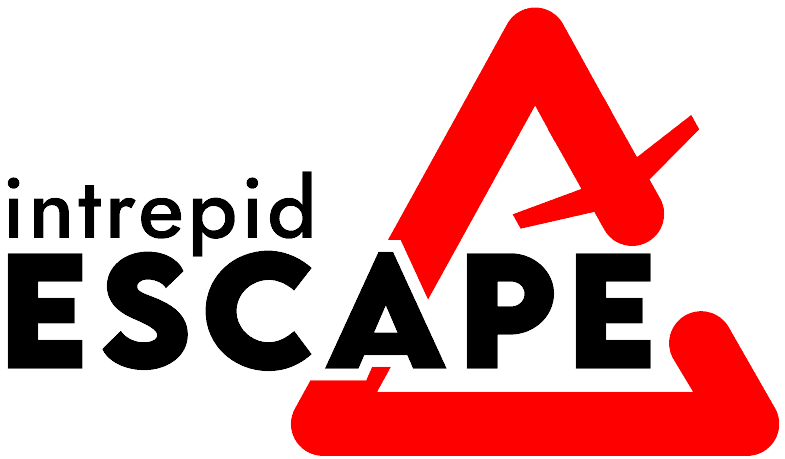




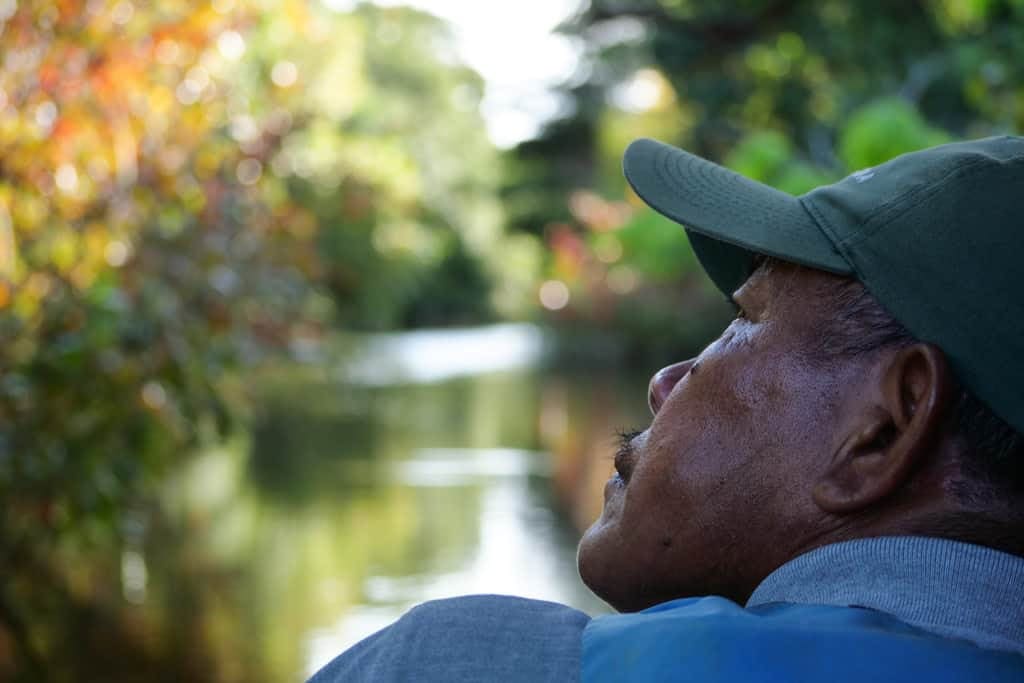




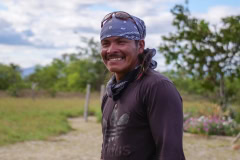




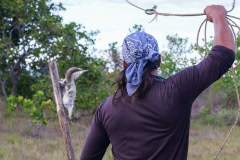






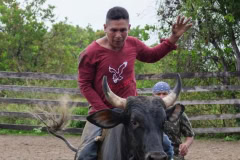























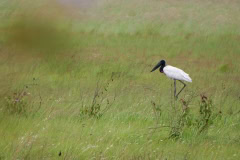
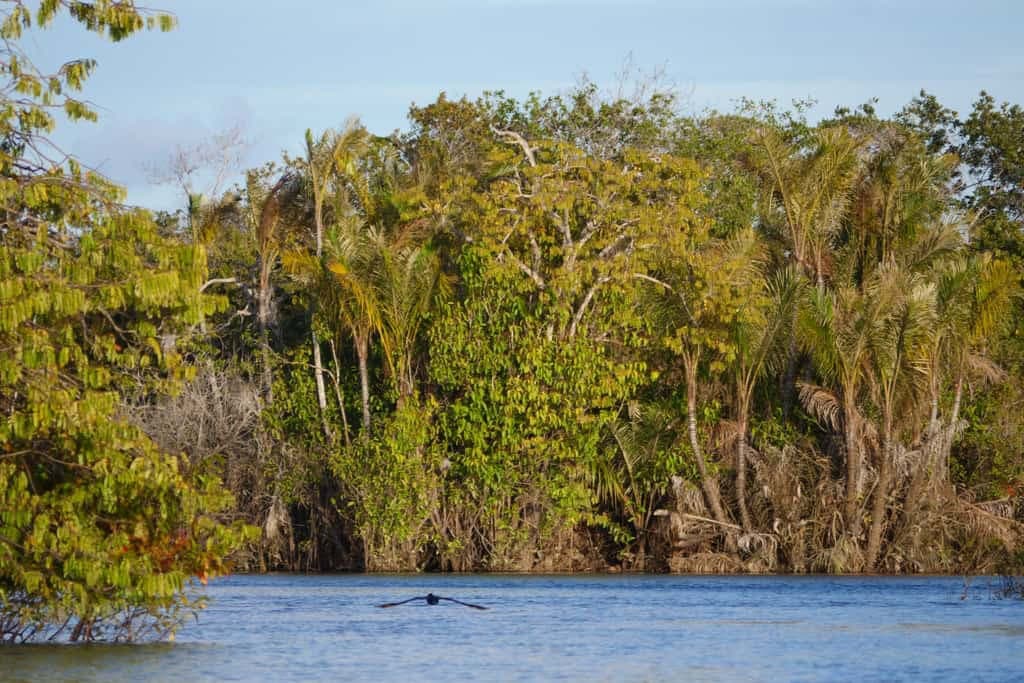
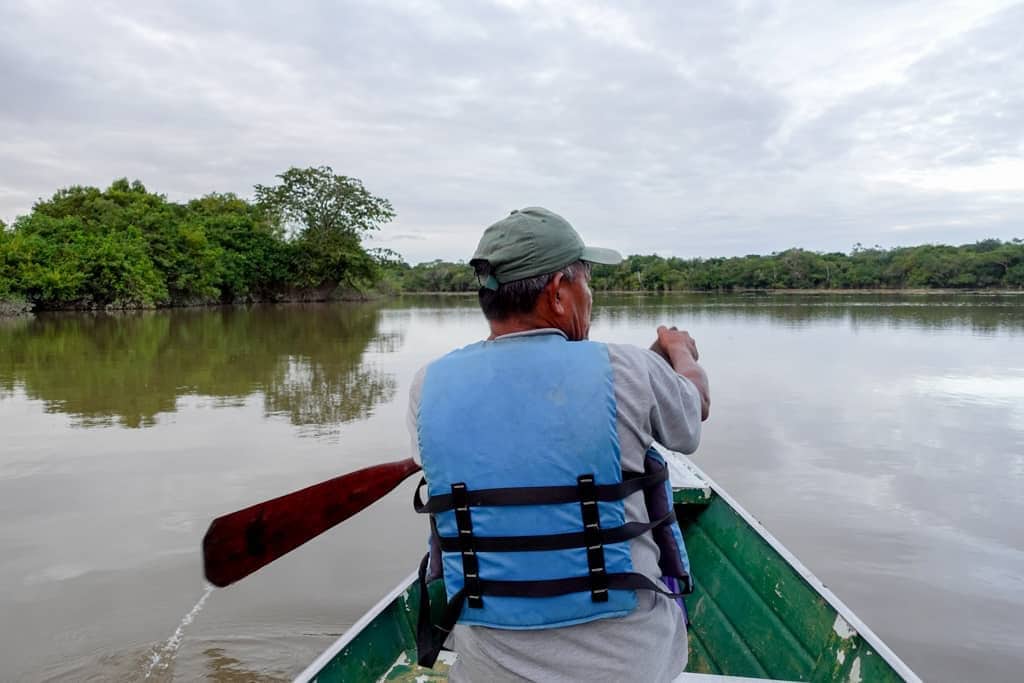













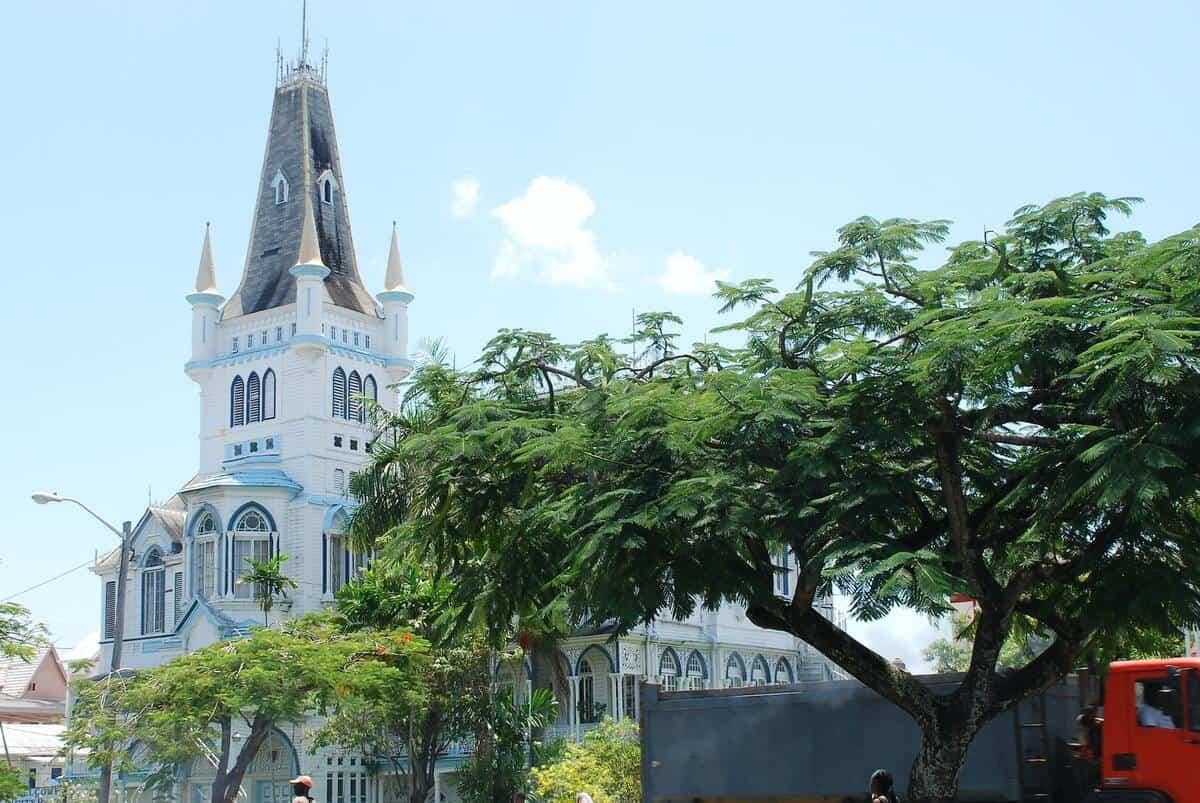


Pingback: Things to Do & Places to See in Georgetown Guyana In 2023 - Intrepid Escape